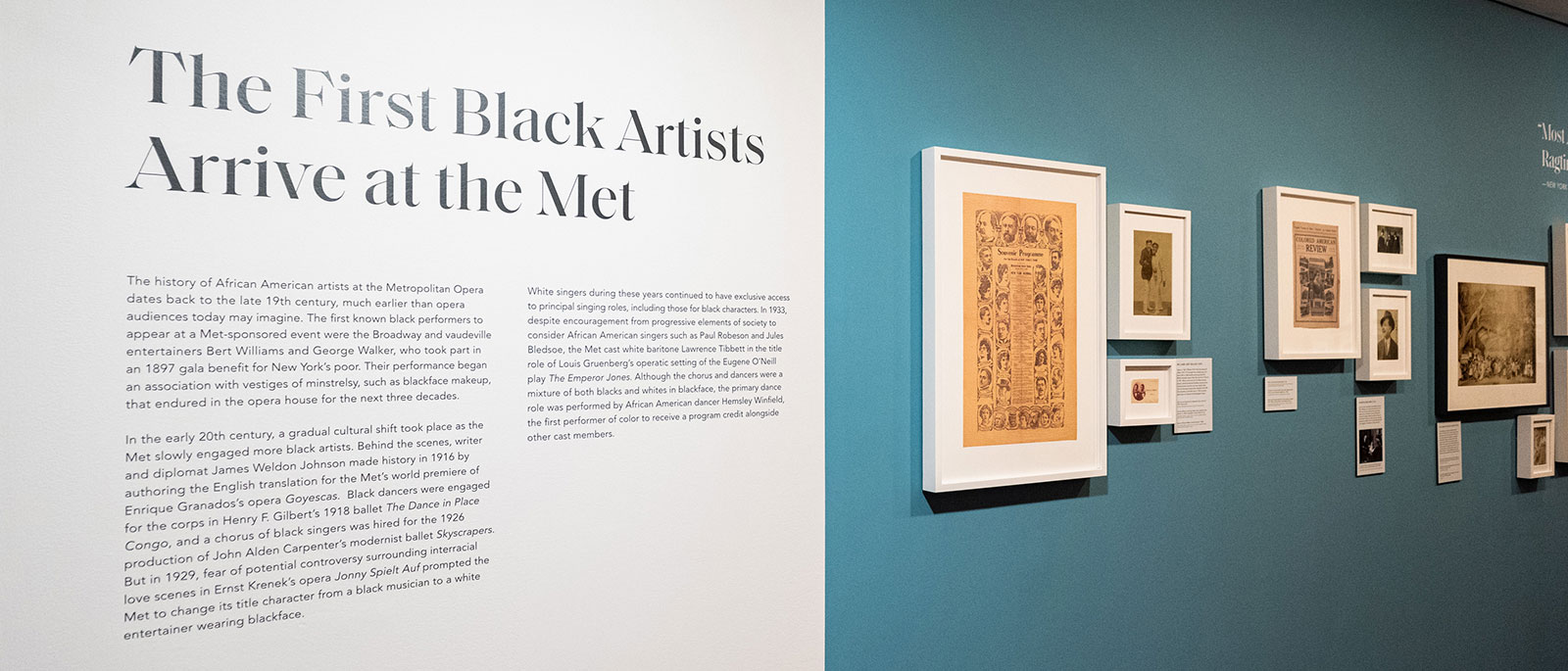
Black Voices at the Met
Met General Manager Peter Gelb introduces a historic new exhibition—inspired by the season-opening new production of Porgy and Bess—that pays tribute to the great African American artists who have graced the Met stage.
On January 7, 1955, contralto Marian Anderson at long last made her Metropolitan Opera debut as Ulrica in Verdi’s Un Ballo in Maschera, becoming the first African American artist to sing a leading role at the Met. At the time—about 15 years after her famous performance on the steps of the Lincoln Memorial—Anderson was in the final phase of an illustrious career. Her Met debut was long overdue, but it only came about thanks to the efforts of Rudolf Bing, who unlike his predecessors made it a priority to engage African American artists upon becoming the Met’s General Manager in 1950.
Although it wasn’t until the back-to-back debuts of Anderson and, a few weeks later, the baritone Robert McFerrin, that the Met officially broke the color line, the thought of hiring black singers to perform here had been a topic of discussion for years, owing, in large part, to the emergence of George Gershwin’s Porgy and Bess and its composer’s requirement of an all-black cast. On the occasion of our new production of Porgy and Bess, which opens the 2019–20 season, we are also presenting a season-long exhibition, Black Voices at the Met, which explores the company’s fraught history engaging African American artists and the long journey toward racial equality in the opera house.
Occupying both the north and south galleries of Founders Hall, the exhibition charts the earliest appearance of black performers on the Met stage, when the vaudeville duo of Bert Williams and George Walker participated in an 1897 fundraising gala; through the Bing years, when Anderson, McFerrin, Mattiwilda Dobbs, and Leontyne Price all made company debuts; into the 1980s, when Porgy and Bess had its eventual Met premiere with Grace Bumbry and Simon Estes in the title roles; up to the new production, which features a starry lineup of black artists who already have thriving Met careers. Indeed, in 1985 when Porgy was first performed here, with the exception of Bumbry and Estes, almost the entire principal cast had to be found and auditioned to make Met debuts. We’re proud that, today, virtually all our leads—Angel Blue, Eric Owens, Golda Schultz, Latonia Moore, Ryan Speedo Green, Alfred Walker, and the legendary Denyce Graves—are established Met stars.
In conjunction with the Black Voices at the Met exhibition, we are releasing a special companion CD, Black Voices Rise, featuring performances by a number of leading African American stars of the first wave, not just Anderson, McFerrin, and Price, but also Shirley Verrett, George Shirley, Kathleen Battle, and Jessye Norman, among others. The exhibition and CD are just two of our efforts to celebrate Porgy and Bess and the work of the great African American artists who have contributed to our history. (Other related activities are detailed here.) But the centerpiece is the premiere of our new staging of the Gershwins’ masterpiece, a historic opening night for the Met.
—Peter Gelb